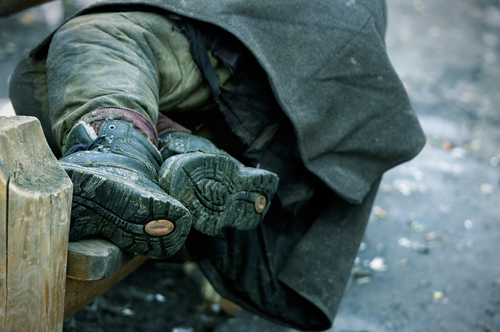Cheaper highly addictive crack is making comeback in NL : NRC

Crack, or basecoke, has been making a comeback in the last two years, an investigation by NRC has shown.
The price of the highly addictive drug has come down and new groups of users, including labour migrants, are becoming addicted, the paper found based on interviews with users, researchers and experts.
“More crack is being used across the Netherlands, in Amsterdam, The Hague, Utrecht, Rotterdam, Eindhoven and elsewhere,” Ella Bowler, who works for drug users aid organisation Mainline.
In 2012, the Trimbos addiction knowledge centre estimated the number of crack users at 6,659 people. Mainline and Trimbos have investigated the current number of users on behalf of the health ministry and their findings will be published in the autumn.
Crack users have multiple problems, Hogeschool van Amsterdam drugs researcher Ton Nabben told the paper. They have no work, no home, family problems, debts and very often they use other drugs as well, he said. “They have become marginalised,” he said.
Mainline field workers see more crack use among Eastern European immigrant workers. If they lose their jobs, they end up on the street where they are introduced to the drug, Bowler said.
Some become addicted at work, she said, citing an example of Polish workers in the horticultural sector who claimed to have been given crack by their employer to up production.
Other groups turning to crack are rejected asylum seekers, mainly from Morocco and Algeria, Bowler said. Crack is also entering the mainstream, Amsterdam-based aid worker Axl Wijnveen said. “I spoke to a 17-year-old who smoked it at a party. She is addicted and has been homeless for two years,” he said.
The drug is cheaper because the amount of cocaine available in Europe, particularly from Colombia, where production has increased. A 0.1 gramme amount of crack now costs some five euros but most users need multiple doses a day.
The drug takes an enormous physical toll. “People don’t look anything like their passport photos from two years ago. They are completely run down,” Wijnveen said. “If you use crack for years, you will have a bigger risk of strokes, arrhythmia, respiratory problems, and high blood pressure,” he said.
According to Dennis Lahey, director of users association Drugsgebruikers MDHG, the provision of medicinal crack could be a solution. It would take users out of the illegal circuit so they can rebuild their lives, he said. “Give them a place to sleep and a social worker, Then they will say goodbye to life on the streets,” he said.
Crack is an increasing problem in European cities, according to some mayors at a conference last year in which Amsterdam mayor Femke Halsema argued to regulate hard drugs.
Thank you for donating to DutchNews.nl.
We could not provide the Dutch News service, and keep it free of charge, without the generous support of our readers. Your donations allow us to report on issues you tell us matter, and provide you with a summary of the most important Dutch news each day.
Make a donation